Monday, March 5, was our day in Hobart. Although the overcast kept the temperature in the mid teens (Celsius, 60s fahrenheit) the sun broke through occasionally but we decided to take a little rain protection just in case and around noon we went ashore to meet our tour group. During a short ride, where we learned that Hobart was a city of about 250,000 in a state with a population of about half a million, we arrived at the Royal Tasman Botanical Garden. As it is approaching autumn here there were fewer blooms than there might have been in summer, the garden was very nice. The garden contains a global collection of species well organized and labeled. Some species have been there for over 80 years.
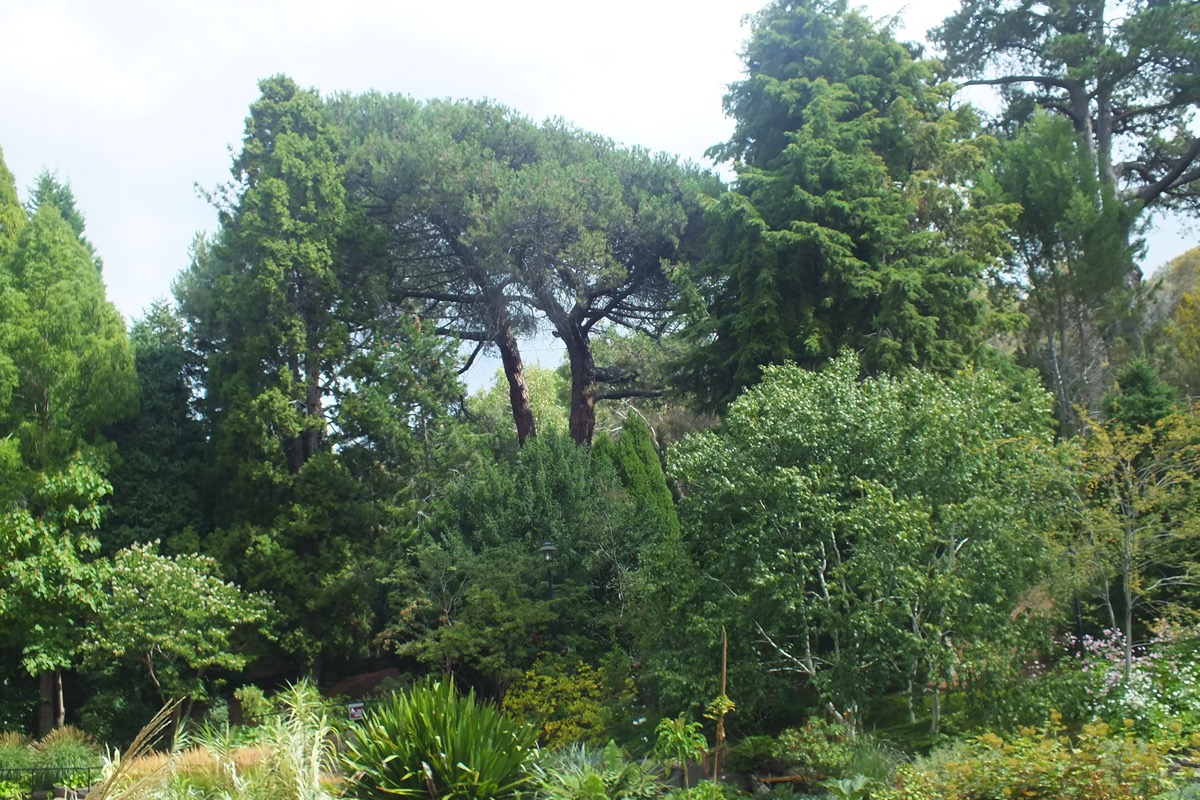
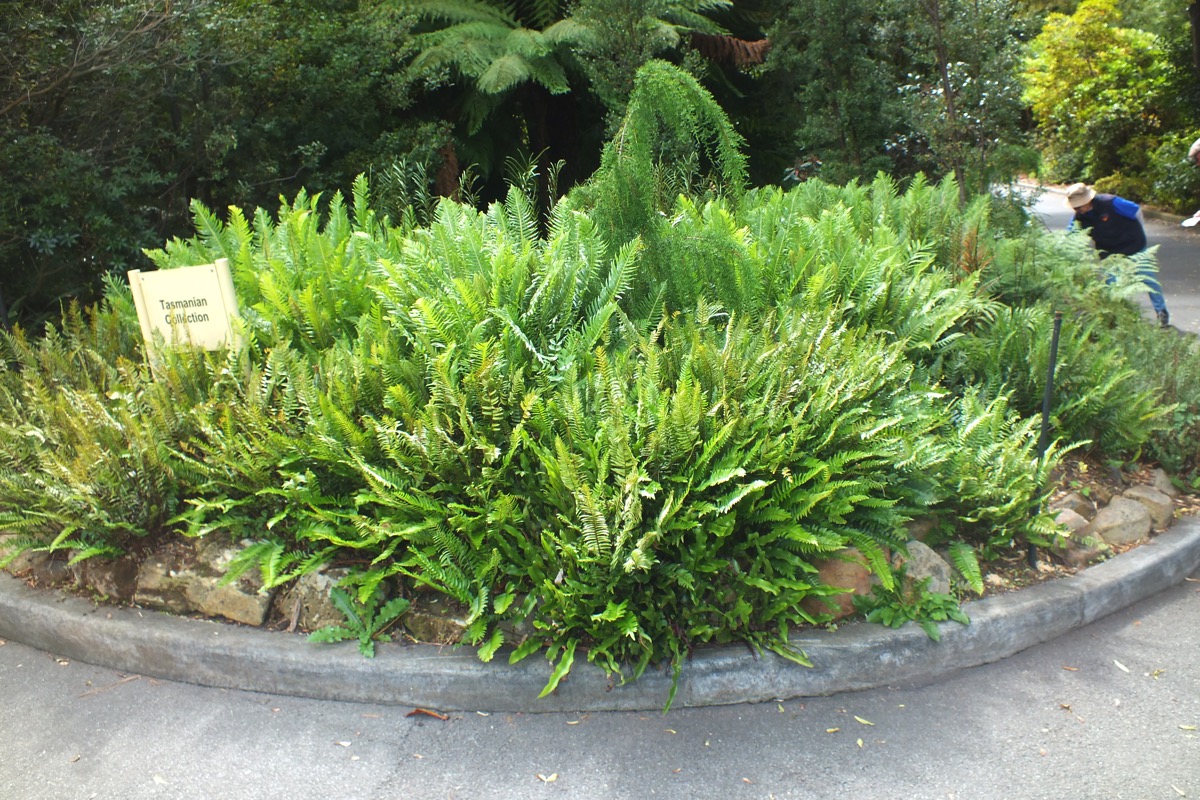
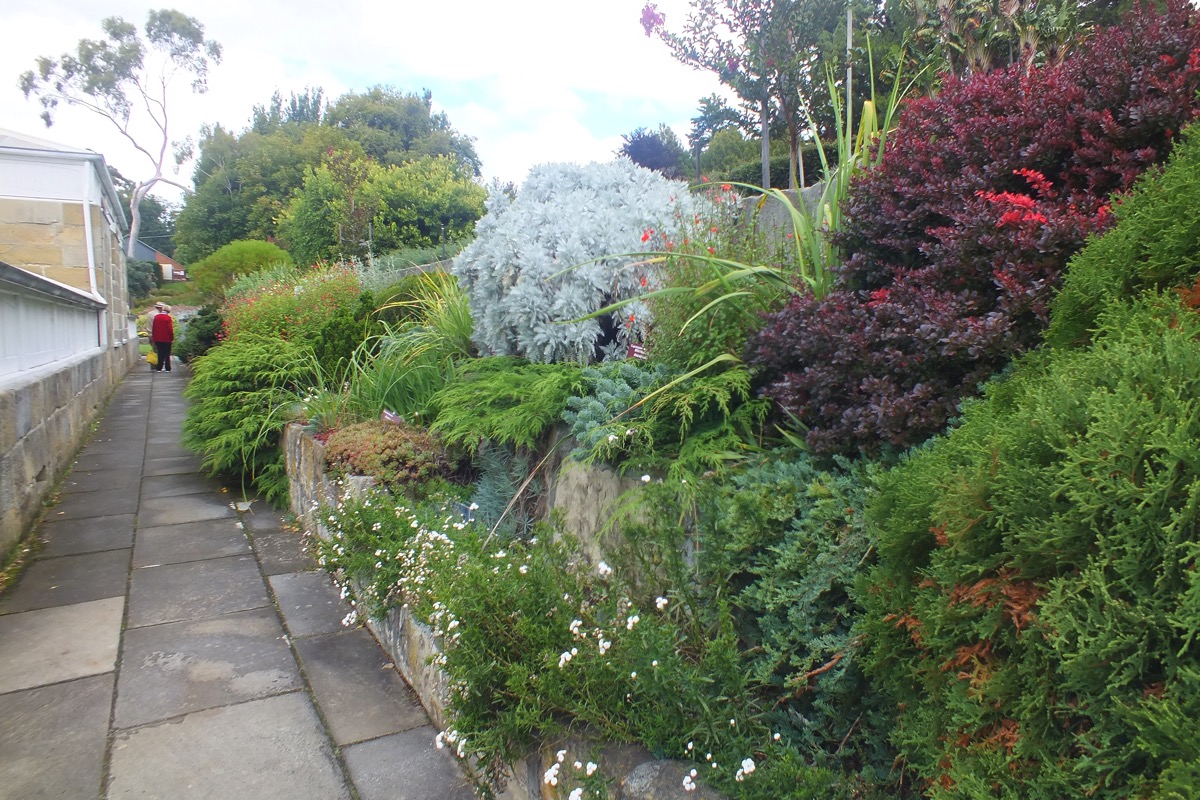
Amaryllis in the wild
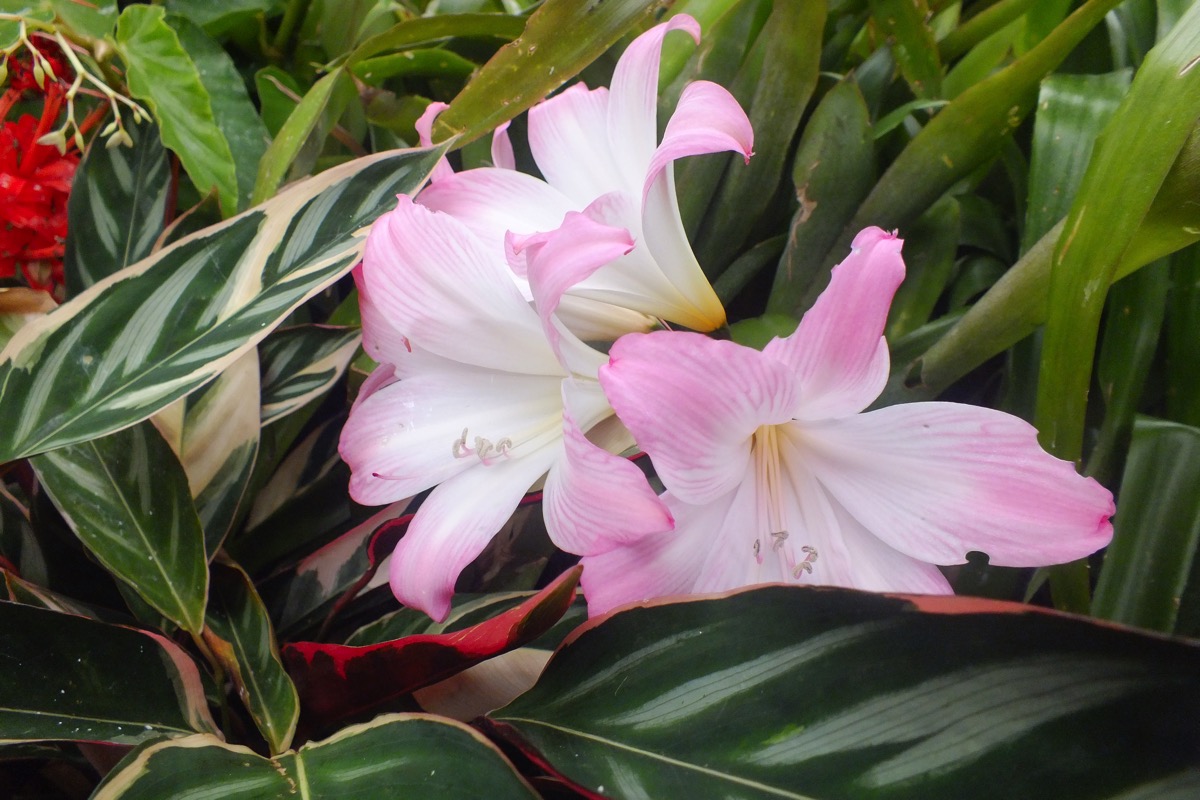
Following the gardens visit we traveled through Hobart and began the ascent of Mount Wellington. The road up the mountain, built early in the 20th century, has been maintained but improved little in a century. The upper half features periodic turnouts to accommodate upbound and downbound vehicles passing safely. When traffic is moderately heavy this system works poorly. The view of Hobart becomes evermore expansive as the coach climbs toward the 1270 metre summit.
Hobart Panorama from Mount Wellington
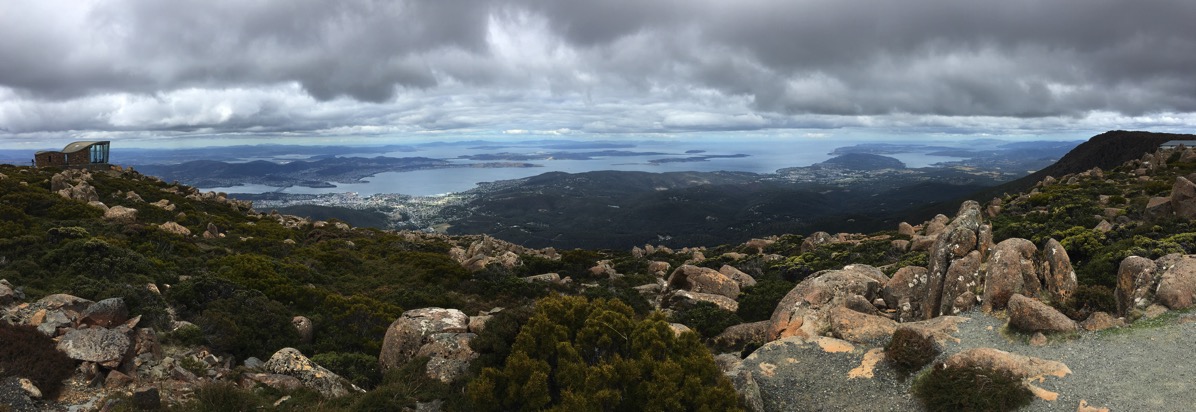
The Port from the Sunnit
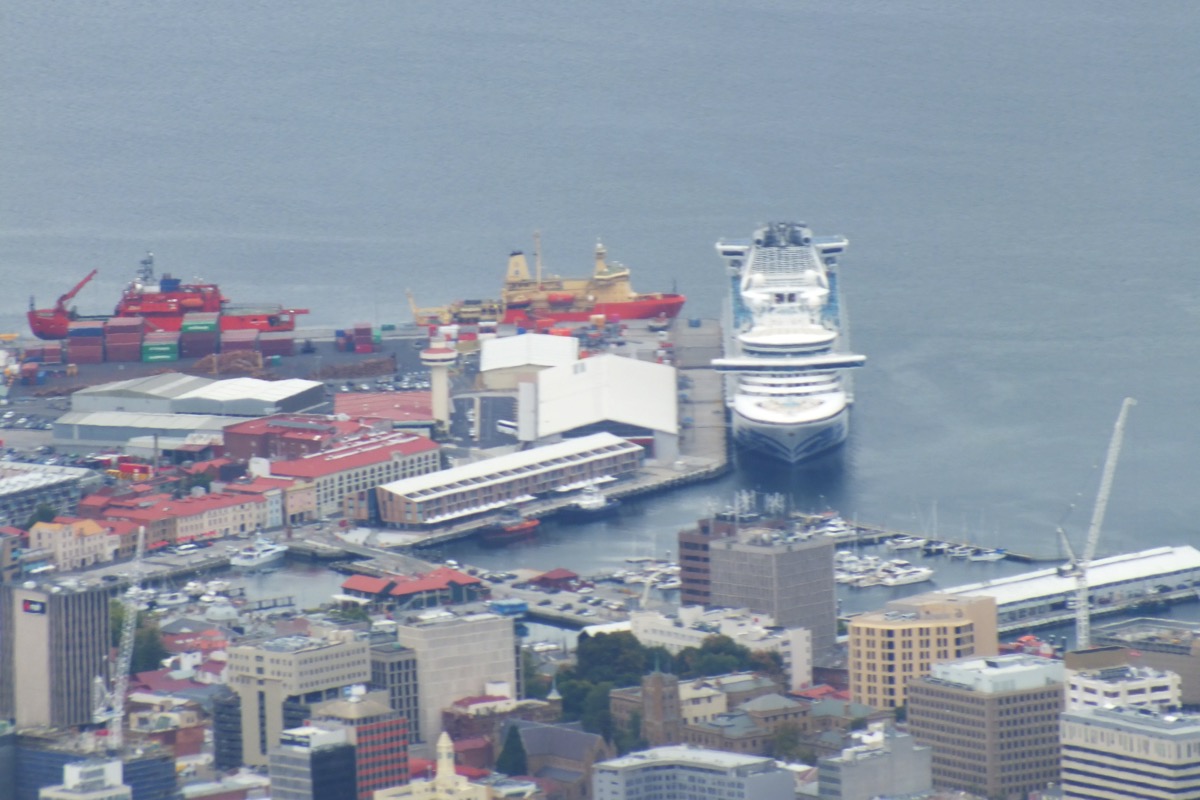
The overnight sail from Hobart to Port Arthur took place between 11:30 PM and 7:00 AM Tuesday, this to cover less than 90 nautical miles. Port Arthur is one of the most famous and infamous British Penal Colonies and our tenders arrived nearly at the front gate of the prison. This location might be said to be a natural prison with sea surrounding it and a very narrow isthmus linking it to the mainland. This isthmus, named Eaglehawk Neck, was policed day and night by vicious dogs chained as a living barrier to those who would try to escape, thus was called the “Dog Line”.
Prison Site
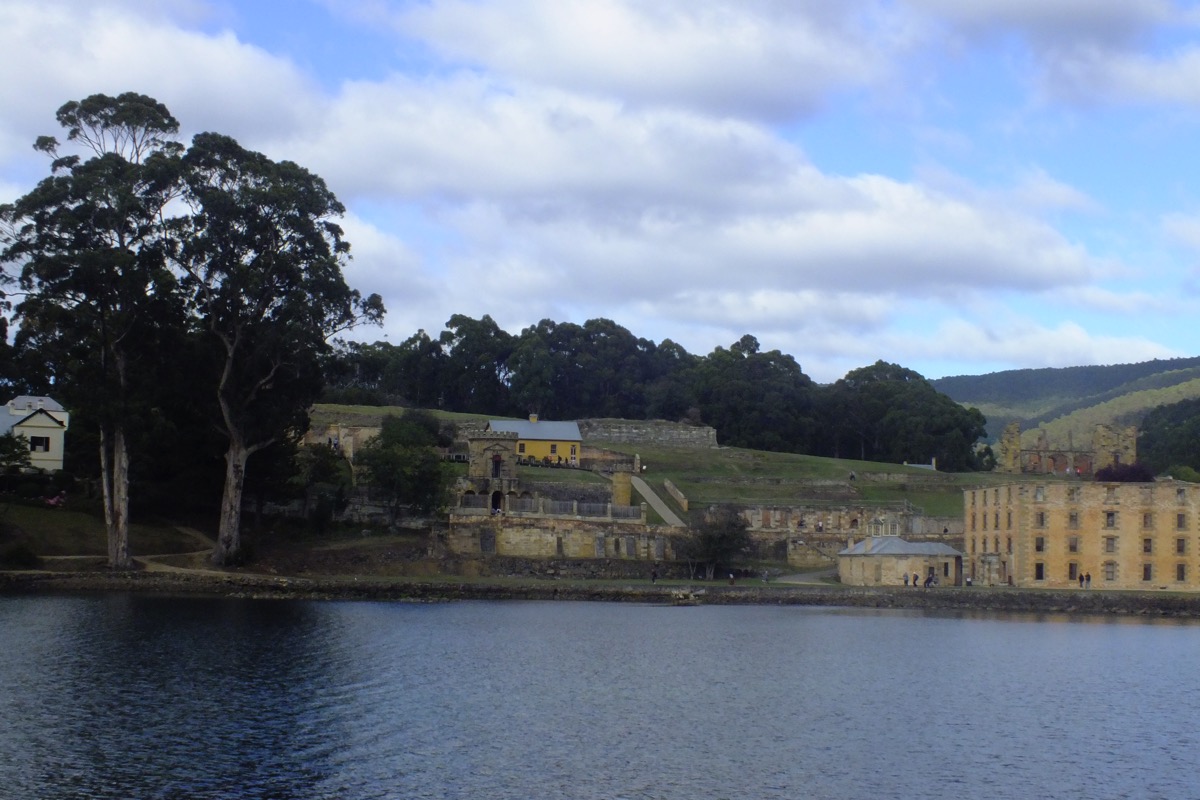
Dog Line Memorial
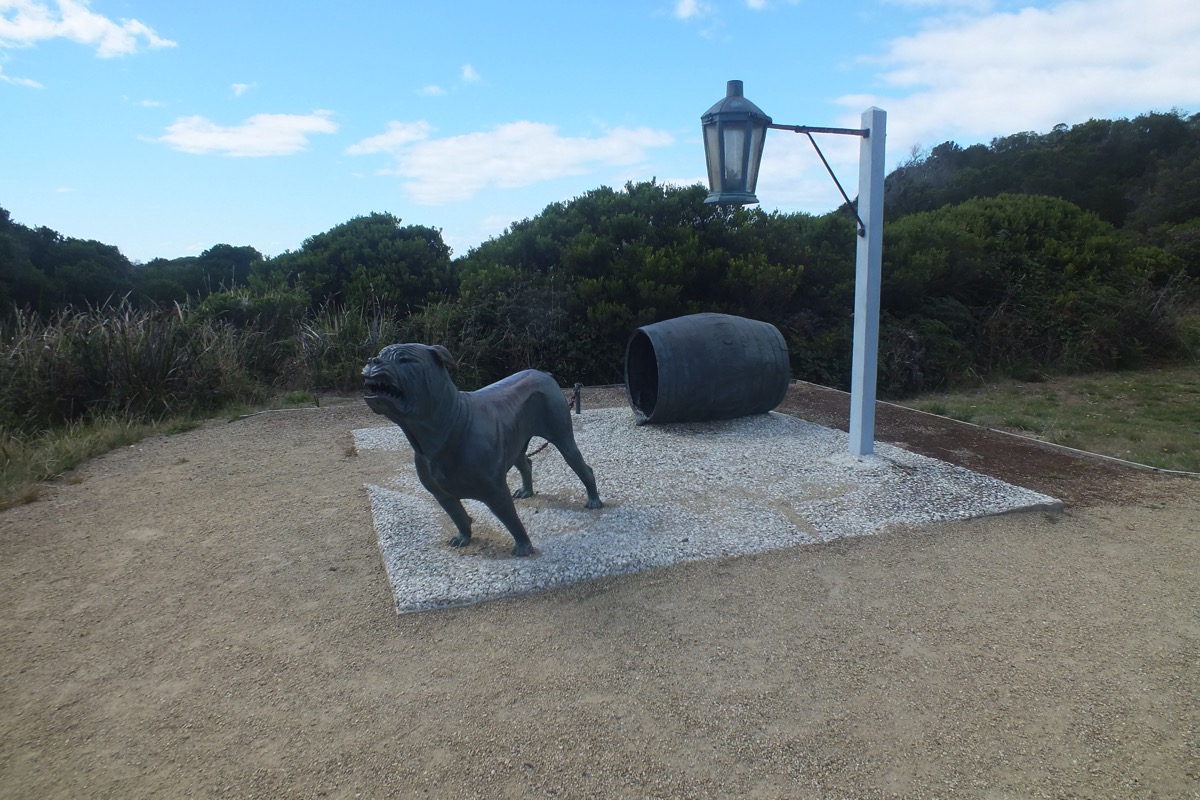
Our tour coach transported our group around the Port Arthur region stopping frequently for photo opportunities featuring the unusual geology of the region. Many of the sheer rock walls facing the sea are riddled with caves. Where this rock has been eroded to sea level the beach is formed by flat, natural patio stone-like formations called Tessellated Pavement. Other areas have stretches of white sand beaches, some of which provide opportunities for surfers.
Rock Face with Tessellated Pavement below
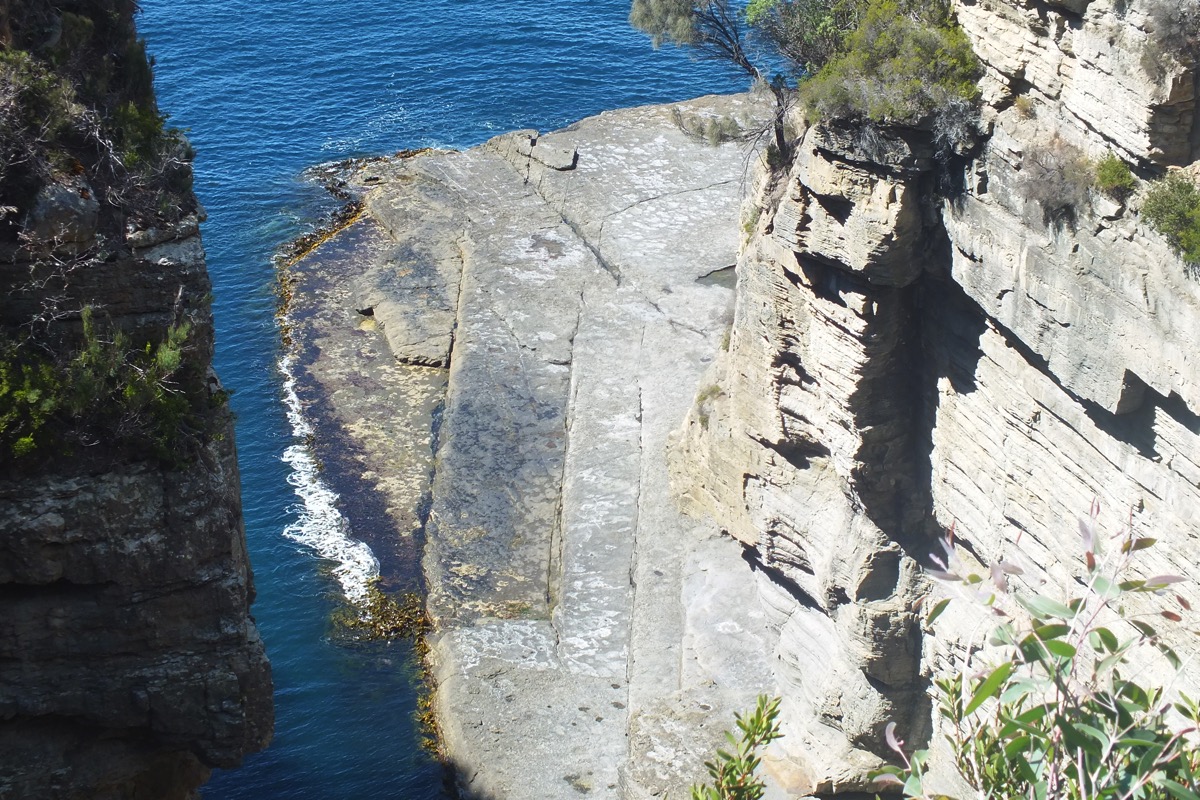
Rock Formations and Sandy Beaches
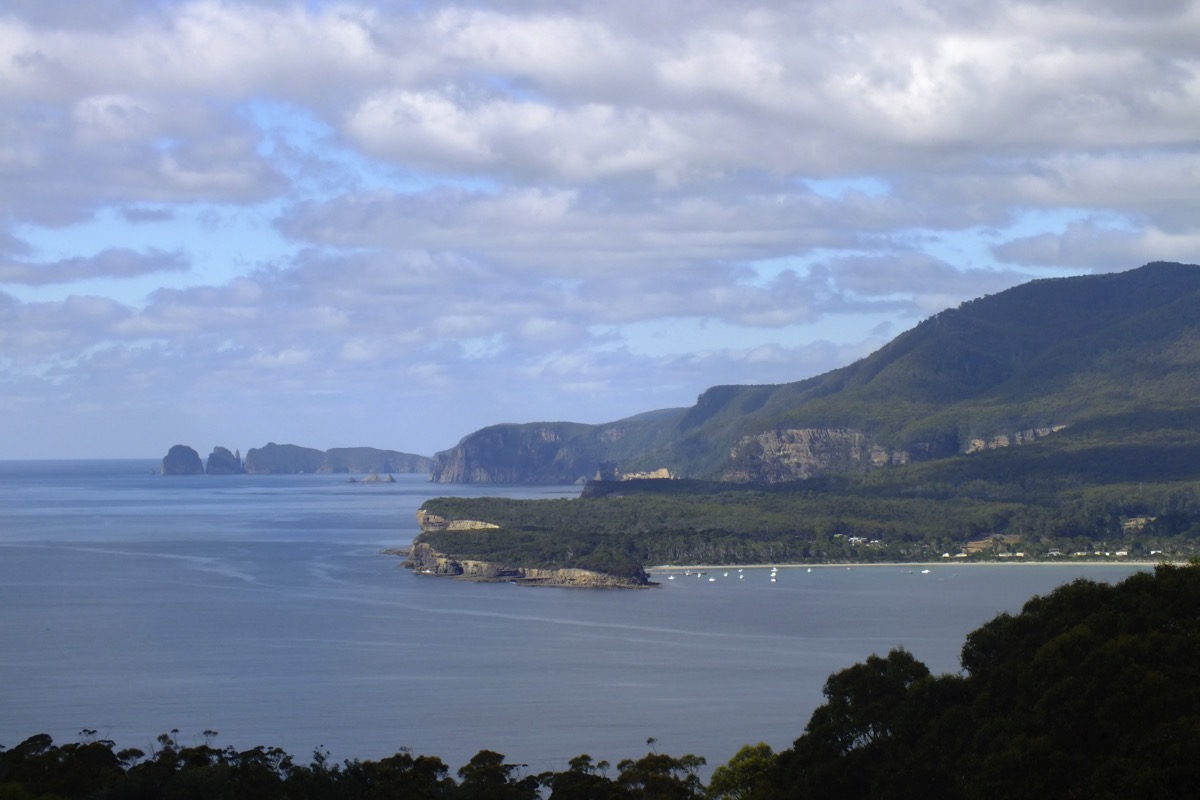
We all complain about the cramped seating and narrow isles on airliners but they are nothing compared to the motor coaches we used for the tours. In Hobart we really re-boarded the coach only twice, in Port Arthur there were a dozen stops. This was a very well behaved group. There were no stragglers and everyone returned to the coach by the time requested by our guide. When we returned to the tender port our seats on the bus were quickly taken over by the next tour group and we returned to the ship to enjoy a sunny, warm afternoon.
[quotcoll orderby=”random” limit=1]

Great read. and enjoy seeing the pictures, Ted. Sounds like a great trip for sure. Enjoy the rest of the journey and we look for ward to the “rest of the story” .. hi hi ..
By the way, for some reason, I’m getting two copies of your emails each time. One is just under your name “Ted Thorpe” and the other one under the title, “Steps to Anywhere – Travel Journey”.
I think I may have messed up and registered a 2nd time in error to receive your emails so you can eliminate either one to the other for me.
Thanks .. Dave
I’ll see what I can do Dave.